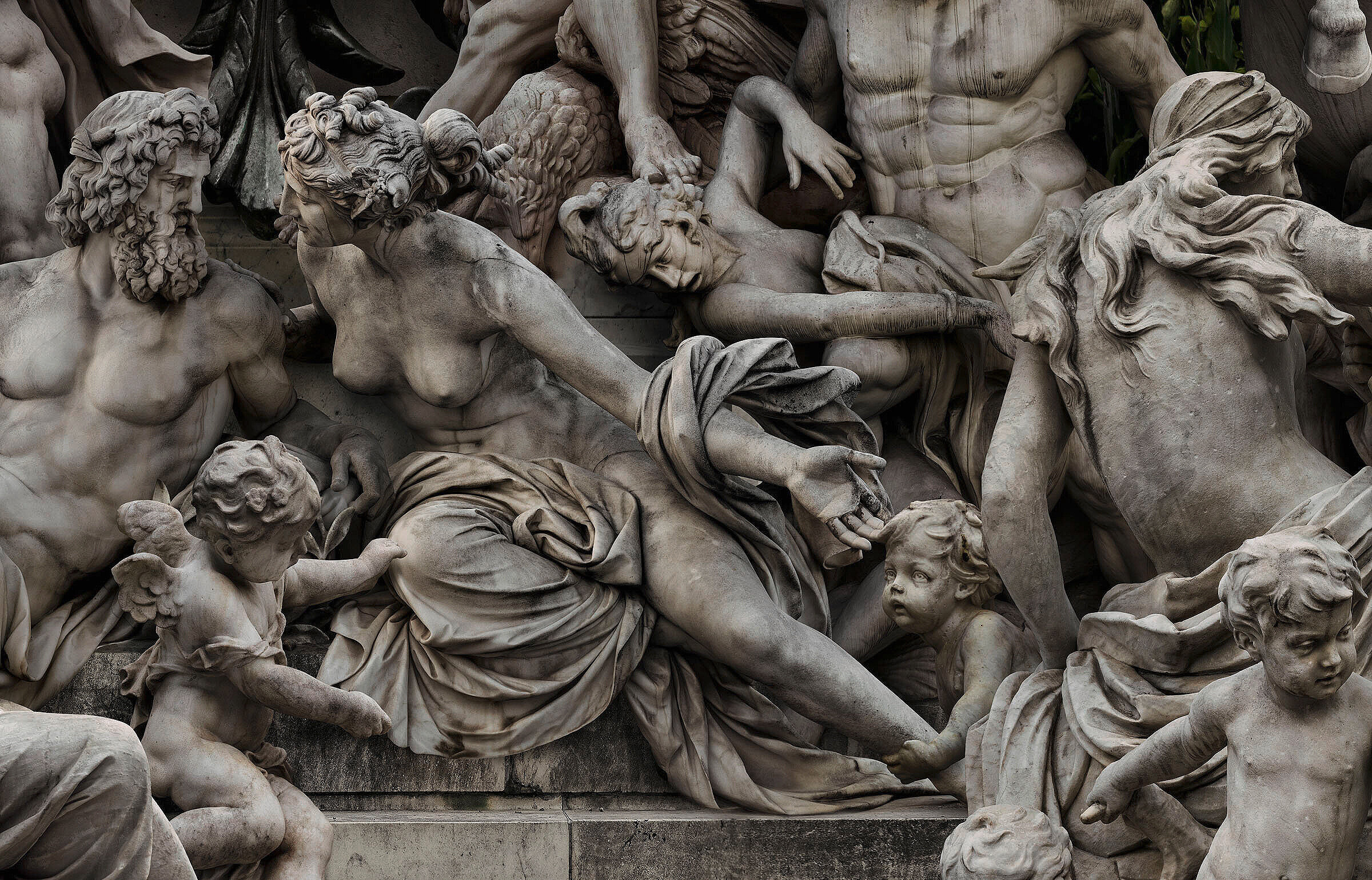Missing Justizia; 2020, 250 x 800 cm
EVERYTHING CREATED IS OBSOLETE
Max Jurasch, has created a kind of tableaux vivant from photos of Viennese sculptures in his oversized work ”Monuments“. For his photographic work, the dimensions and resolution are considered monumental. This allows the viewer to immerse himself in the images, almost to crawl between the figures to see all the details. Surfaces.
According to Mittig and Plagemann, the term monument in the context of art history refers to a work of art that is intended to be permanent and commemorate people, events or social concerns. With monuments, the financier and commissioner also manifests his political position, as well as a message to posterity.
The art historian Hubertus Adam noted that monuments in public spaces are hardly noticed by passers-by. In his opinion, this has to do with the dynamic change of general viewing habits. They contain time-bound signs, communicate information that is usually clearly heard in the phase of the monument’s creation, but is no longer understood afterwards.
Jurasch adds a second level to the magnificent exercise of his technical skills: the narrative of the people depicted. Jurasch is interested in the individual history of the people depicted, what they have to do with the house, the builder, the owners. Detached from façades and lifted from plinths, the sculptures are extracted from the existing ensembles and regain their
individuality. One almost thinks they have been brought to life like golems, because their positions arise from an imperceptible movement. Jurasch breathes life into them by assembling them into new groups in a supposedly better, more equal society.
For me, the assemblage radiates a peaceful egalitarianism: dignitaries, politicians, children, mothers, soldiers, angels, old men, women have gathered, all looking in one direction, the reason for which remains hidden from the viewer of the assembly. A possibility to develop one‘s own phantasies. 3 Variations as an example of the transformation of monuments as a means of expression, embedded in a contemporary context. In terms of craftsmanship, ”Monuments“ by Max Jurasch is reminiscent of Mario Cresci‘s approach.
Like Cresci, Jurasch gives the opposite value to the function of the photographic medium, as that of confirming the veracity of the real. The possibilities to go into depth of field and detail seem unlimited through digital photography and photo editing. Nevertheless, good craftsmanship and specialist training are required to be able to process such image data and present it as a work of art.
- Denise Parizek
Missing Justizia (Detail)
Missing Justizia (Detail)
Missing Justizia (Detail)
Mothers 2020; 2020, 180 x 150 cm
To all the Mothers who have endured the lock-down and managed insanity on the home front for so many months (as NO other generation has had to endure), I am humbled and filled with thanks to you all – I felt this image may feel familiar!
- Alexander Ouvaroff
Mothers 2020 (Detail)



